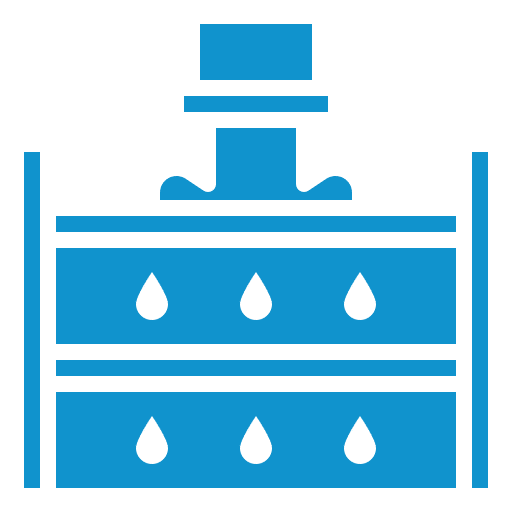When it comes to creating durable and long-lasting fabric products, the key is proper industrial fabric welding.
Industrial fabric welding is the technique used to join together different pieces of fabric. This process creates a strong bond between pieces that prevents tearing, breaks, or leaks along the seam, a quality that is important for any fabric product but especially those such as tents, inflatables, blinds, and liners.
When done properly, fabric welding can help extend the lifespan of the product by making it water-resistant, more resilient to abrasion, and reducing its overall need for regular maintenance or replacements. In a way, ensuring that your custom fabric pieces have been properly welded is a great way to reduce your long-term expenses.
So, with lower product and maintenance costs on the line, you can see how important it is to put your fabric welding project in the right hands. While it might seem like anyone with cut and sew capabilities can finish these kinds of projects, it is important to look for the best possible welder for the job.
One of the best ways to find and choose the right fabric welder for your cut and sew project is to understand the process and possible industrial fabric welding methods for yourself. That way, once you start contacting possible candidates you can ask them specifically about the fabric welding process that’s best for your particular project.
Fabric Welding Technologies
Industrial fabric welding can be done in a number of different ways, each of which may have benefits or be better suited for different projects. Here is a rundown of each fabric welding method and what kinds of projects they are best used for.
– Hot Wedge Welding
Hot wedge welding uses a heated metal wedge that slides between the two fabrics at the point at which they need to be welded. During the application, the heat from the wedge softens and melts their coating at the welding point. Then, pressure is applied at the seam and, as the fabrics cool down, the weld is solidified.
Because the process applies heat in a very precise location, as opposed to other methods, hot wedge fabric welding is a great welding method for projects and products that need high-precision welding to ensure leak prevention. These products might include water, other liquid, or fuel containment cases, bags, or tanks. PVC-coated fabrics, polyethylene, nylon, and polypropylene are materials that respond quite well to hot wedge welding.
– Hot Air Welding
Hot air welding is another fabric welding technique that utilizes heat to create the bond between fabrics but in a slightly different way. This method uses a heat gun that blows hot air between two fabrics to soften and melt the coating. Pressure is then applied at the seam and as the two fabrics cool down the weld is solidified.
This technique is useful for many of the same materials and projects as hot edge welding. However, because there is no solid edge from which the heat is applied, hot air welding is a popular method for creating welds of unique or complex shapes since the heat gun can be maneuvered in a more versatile way. This fabric welding technique is also done on the inside rather than the outside, which makes it better for applications where the aesthetic value of the piece will need to be considered as well.
– Impulse Welding
Impulse welding is a two-in-one fabric welding method that uses a single hot bar to apply both heat and pressure to melt and weld the thermoplastics at the desired seam. Because both the heating and pressure stages occur simultaneously, impulse welding is one of the fabric welding methods that provide the most precise, aesthetically pleasing, and strongest welds and seams.
The two-in-one nature also allows for quicker welds to occur, shortening the time and energy required for the project. Impulse fabric welding is commonly used to weld low to medium-thickness materials including acrylic and PVC coated fabrics, particularly those that will be used for marine use and need to be guaranteed to be water-tight.
– Radiofrequency Welding
While every fabric welding technique has its specific strengths and preferred uses, radio frequency welding is perhaps the most popular and common technique used across the world. Radiofrequency welds use high-frequency electric fields to induce heating and welding of the materials. Heating, pressure, and cooling occur all in one process.
Radiofrequency welding is so popular for a number of reasons, but perhaps the number one reason is its consistency and versatility. Capable of creating straight or complex seams, this process can be customized to meet the needs of your project. Because radiofrequency affects the materials on a molecular level, this welding technique can be used on almost any material and for almost any application.
– Ultrasonic Welding
Ultrasonic welding uses high-frequency vibratory energy to create friction and heat different pieces of materials to create a weld as they melt together and cool. One of the biggest advantages of ultrasonic welding is the speed at which welds can be created, often within fractions of a second.
That makes this technique a particularly useful method where the process requires rapid turnaround times, such as an assembly line where many products need to be welded within a short period of time. Friction is the source of heat in this method, so it is also one of the safer welding methods since no additional sources of heat or chemicals are needed.
Fairway Products is Here to Help.
Utilizing the right industrial fabric welding is essential to ensuring the durability and strength of your product. So, it is equally important to work with a cut and sew manufacturer with the knowledge and capabilities to offer the exact welding technique you need.
Fairway Products is a cut and sew full-service manufacturer that provides cutting, sewing, and fabric welding service providing our customers with the tools they need to bring their product to life, backed by the experience to do so on time, on budget, and utilizing the best methods.
We have the capacity to meet your needs with rapid shipping and delivery. Along with our industrial fabric welding services, we provide product development and engineering skills to work with woven fabrics, non-woven, vinyl, leather, foam, laminates, molded plastic, and even wood fiber components.
Have a project in mind or need help getting started? Request a Quote from Fairway Products today!



